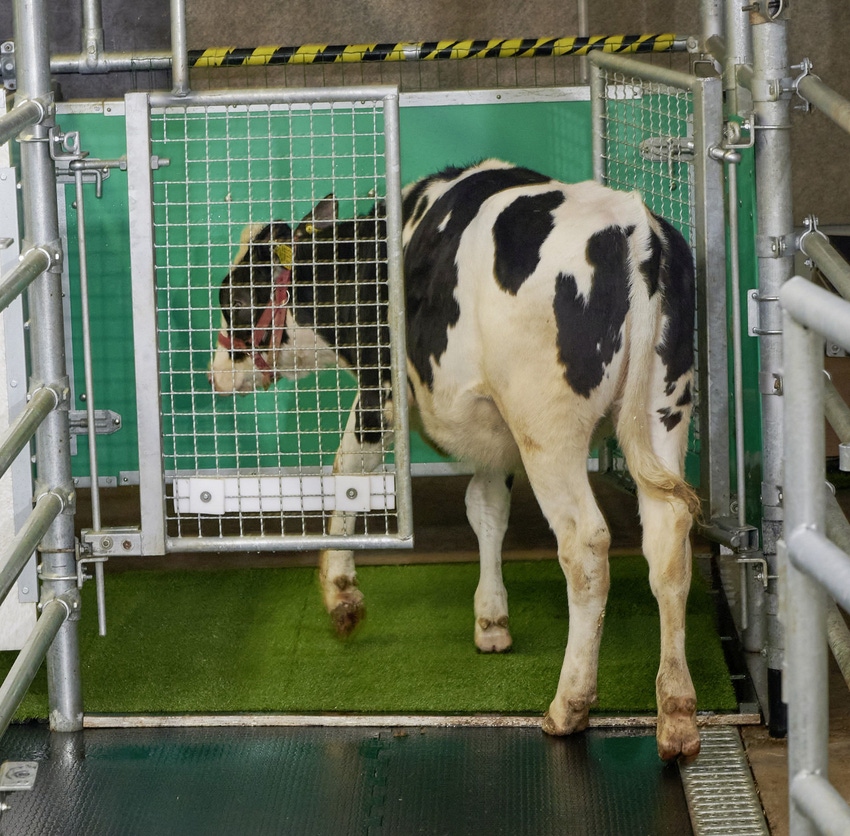Behavioral scientists develop cow toilets and research control of excretion behavior.
July 20, 2020

In collaboration with behavioral researchers from The University of Auckland in New Zealand and scientists from the Friedrich-Loeffler-Institut (FLI) Institute for Animal Welfare & Animal Husbandry in Celle, Germany, behavioral biologists at the Leibniz Institute for Farm Animal Biology (FBN) in Dummerstorf, Germany, are researching the excretion behavior of cattle.
Pets are usually house trained, and even pigs (if possible) go to a secluded stall corner for their business, FLI said in an announcement, which noted that the situation with the cows is completely different.
Cows go to the toilet wherever they happen to be, which may have negative consequences for the environment and the animals themselves.
The ammonia emissions that arise are climate relevant. However, using a latrine and separating feces and urine could significantly reduce them, FLI said. A dirty barn has an unfavorable effect on the animals' claw and udder health and increases the cleaning effort considerably.
An adult dairy cow produces an average of 20-30 liters of urine and 30-40 kg of feces per day, FLI noted.
In a current study, the scientists came to the conclusion that associative learning methods such as operant conditioning make successful latrine training in cattle possible, FLI said.
The results of the study have now been published in the journal Neuroscience & Biobehavioral Reviews. The study found the neurophysiological foundations of excretion behavior in mammals and possible learning processes that can be developed in cattle to enable their behavior to be controlled with regard to the use of a latrine in the barn, FLI said.
The research results concluded that cattle also have the intelligence and neurophysiological foundations that make toilet training possible.
Training takes place in latrines built specifically for calves, which are provided with a permeable green covering that also acts as a splash guard. When calves have urine excretions outside the latrine, they are punished with a short shower, whereas they are rewarded after urine excretion in the latrine.
"As a first step, we wanted to examine how cows can ever be trained on a controlled precipitation behavior," FBN projects manager Dr. Jan Langbein said. “Overall, this is a very complex process. However, we can now answer this question with a resounding yes, as the current experiments with the calves have shown. The learning method of so-called operant conditioning, which is based on a reward for the desired behavior, has proven itself. Practical integration into everyday stables will play a decisive role."
The international breakthrough is still pending here, although scientists in Denmark, England, Estonia, Australia, Canada and the Netherlands have been researching it for some time, FLI said. That is why the FBN scientists want to take a big step forward with their research colleagues in Celle and New Zealand.
"If we could really use the intelligence of the animals to set up cow toilets in practice, everyone would benefit: the cows, the animal owners and the environment," project coordinator Lars Schrader with FLI said.
You May Also Like


.png?width=300&auto=webp&quality=80&disable=upscale)
